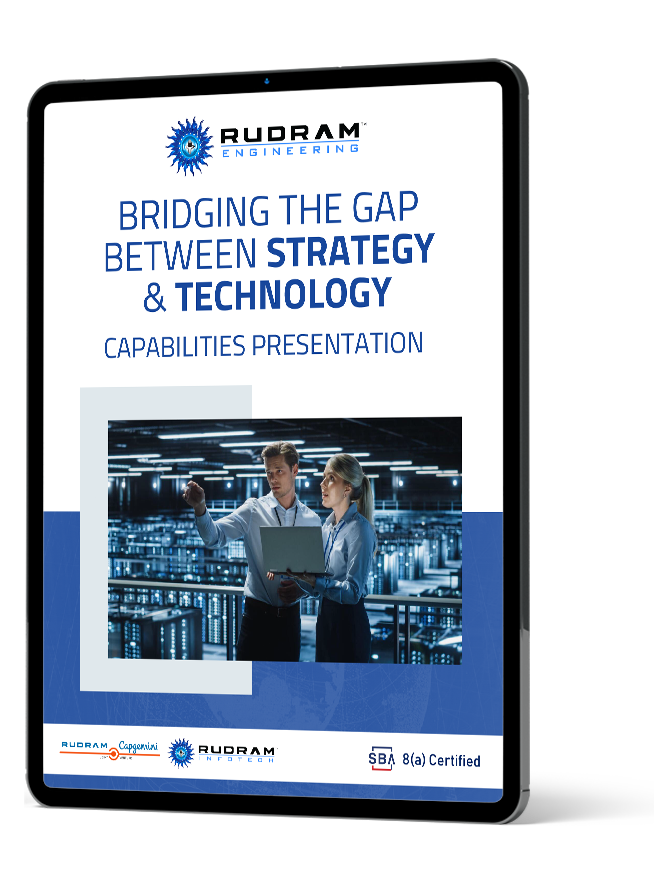In today’s rapidly evolving digital landscape, both enterprises and government agencies are increasingly adopting cloud computing to drive efficiency, reduce operational costs, and accelerate innovation. However, as technology stacks grow more complex, the challenge of integrating disparate systems across multiple domains becomes critical. Enter multi-domain system integration—a strategic approach that enhances cloud performance while ensuring scalability, security, and interoperability.
At Rudram Engineering, we specialize in delivering comprehensive multi-domain integration solutions that empower organizations to optimize their cloud infrastructure.
Multi-domain system integration involves connecting and unifying different IT domains—including applications, data systems, networks, and security protocols—into a single, cohesive cloud environment. These systems, often built on varied platforms and technologies, must operate together smoothly to ensure optimal performance.
Effective integration guarantees seamless communication, real-time data sharing, and reliable system interoperability—critical for supporting today’s high-performance cloud-based applications.
Modern cloud environments are built on diverse platforms, programming languages, and data standards. Without proper integration, these differences can lead to inefficiencies or system failures.
At Rudram Engineering, we design integration frameworks that facilitate interoperability across multiple domains, ensuring all components work in harmony. This enables smooth operations, reduces compatibility issues, and improves cloud application performance.
Scalability is one of the cloud’s biggest advantages, but siloed systems can hinder it. Through multi-domain system integration, businesses can build cloud infrastructures that scale both vertically and horizontally to meet fluctuating workloads.
Whether it’s expanding compute capacity or optimizing existing resources, Rudram’s integration solutions ensure your cloud grows with your organization, without compromising performance.
In a multi-domain setup, data often exists across various silos—applications, APIs, databases, and third-party services. Integration enables centralized data management, allowing real-time access to consistent, high-quality information.
Our integration solutions support synchronized data flows, making it easier to derive actionable insights through cloud-based data analytics and business intelligence platforms.
With more organizations moving sensitive data to the cloud, cybersecurity is a top concern. Rudram Engineering applies Zero Trust security principles and DevSecOps practices across all domains, ensuring unified compliance and risk management.
From identity verification and encryption to continuous monitoring, we build secure cloud ecosystems that defend against threats and meet strict regulatory requirements.
Latency in cloud systems can severely impact user experience and mission-critical functions. Multi-domain integration helps reduce latency by facilitating efficient routing, load balancing, and data handling across domains.
This results in faster response times and consistent performance for real-time applications such as aerospace control systems, financial services, and customer engagement platforms.
Government agencies require secure and scalable IT environments for defense, logistics, and national infrastructure. Rudram Engineering supports these efforts by integrating advanced cloud systems, improving operational efficiency and mission readiness for critical applications like flight control and satellite systems.
In the aerospace industry, reliable integration between systems such as avionics, telemetry, and flight navigation is vital. We provide seamless solutions that connect these systems within a cloud-native architecture, improving safety and reducing downtime.
For businesses leveraging data analytics, multi-domain integration enables a 360-degree view across all data sources. We connect on-premise databases, cloud platforms, and external APIs, empowering organizations to make faster, smarter decisions backed by real-time data.
With over 35 years of experience in cloud engineering and systems integration, Rudram Engineering has a proven track record of delivering robust, secure, and agile cloud solutions.
Multi-domain system integration is more than a technical solution—it’s a strategic enabler for modern organizations looking to optimize cloud performance, ensure security, and future-proof their operations.
By integrating diverse systems into a unified, scalable, and secure cloud environment, you can drive innovation, reduce costs, and improve business outcomes.
Contact Rudram Engineering today to discover how our multi-domain system integration services can transform your cloud infrastructure.

Rudram Engineering Inc. (REI) is a well-known pioneer in software systems engineering, recognized for its creative solutions and the latest cutting-edge technologies. By focusing its resources on developing cloud-based technologies, REI further employs the power of DevSecOps to build security into the software development life cycle. The company also adopts Agile software development methodologies to be flexible, effective, and quick in delivering quality software solutions. Rudram Engineering Inc. is a name that epitomizes quality with innovation; it establishes new yardsticks in the industry with solid, scalable solutions that meet the dynamic demands of engineering.
As software becomes more complex, the need for thorough testing increases. In 2025, advancements in automated testing, AI-powered testing tools, and continuous quality assurance are expected to play a major role in ensuring reliable software delivery.
Actionable Insight: Thorough testing is essential to ensure that your software meets customer expectations and performs reliably. At Rudram Engineering, we employ comprehensive testing protocols to ensure every product we deliver is both robust and secure, minimizing bugs and maximizing customer satisfaction.
Rudram’s commitment to excellence, transparency, and customer satisfaction sets them apart. They maintain strategic partnerships to harness cutting-edge technologies and expand their capabilities, ensuring that clients receive the best possible solutions.
No-code and low-code platforms are gaining momentum as businesses seek faster, more accessible ways to develop software. These platforms allow individuals with little to no programming experience to build functional applications, reducing the time and cost of development.
Actionable Insight: Incorporating no-code or low-code platforms can speed up your application development, especially for simple or routine tasks. Rudram Engineering leverages these tools when appropriate to accelerate delivery without sacrificing quality or flexibility.